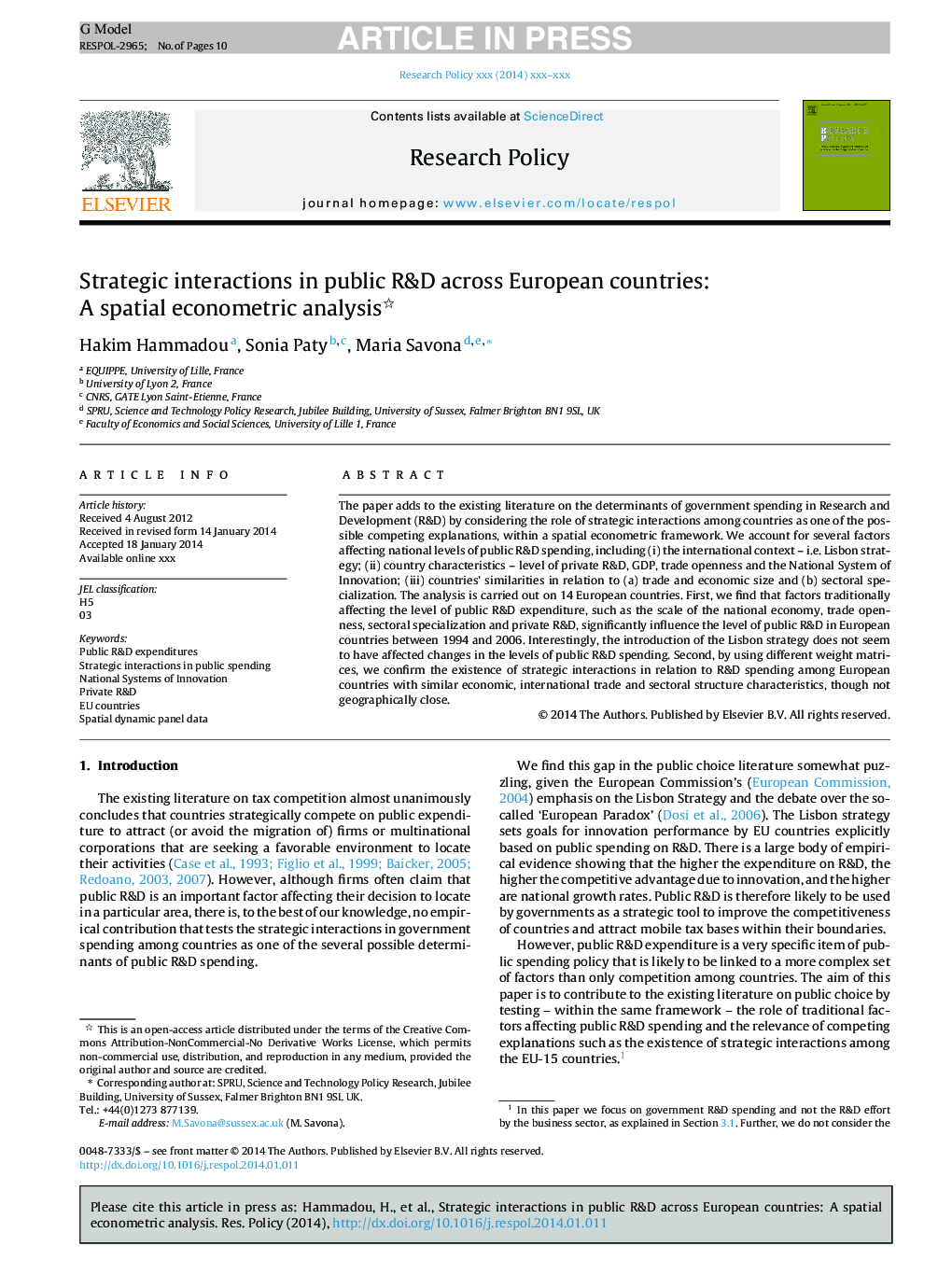| Article ID | Journal | Published Year | Pages | File Type |
|---|---|---|---|---|
| 10483057 | Research Policy | 2014 | 10 Pages |
Abstract
The paper adds to the existing literature on the determinants of government spending in Research and Development (R&D) by considering the role of strategic interactions among countries as one of the possible competing explanations, within a spatial econometric framework. We account for several factors affecting national levels of public R&D spending, including (i) the international context - i.e. Lisbon strategy; (ii) country characteristics - level of private R&D, GDP, trade openness and the National System of Innovation; (iii) countries' similarities in relation to (a) trade and economic size and (b) sectoral specialization. The analysis is carried out on 14 European countries. First, we find that factors traditionally affecting the level of public R&D expenditure, such as the scale of the national economy, trade openness, sectoral specialization and private R&D, significantly influence the level of public R&D in European countries between 1994 and 2006. Interestingly, the introduction of the Lisbon strategy does not seem to have affected changes in the levels of public R&D spending. Second, by using different weight matrices, we confirm the existence of strategic interactions in relation to R&D spending among European countries with similar economic, international trade and sectoral structure characteristics, though not geographically close.
Related Topics
Social Sciences and Humanities
Business, Management and Accounting
Business and International Management
Authors
Hakim Hammadou, Sonia Paty, Maria Savona,
